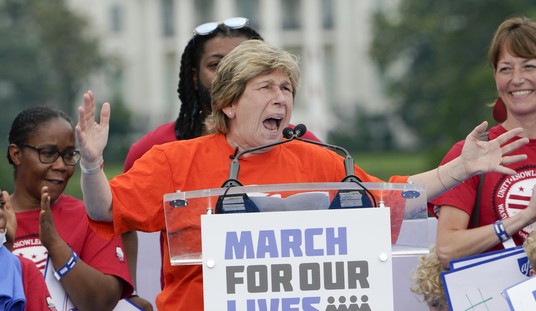Income inequality has been blamed for everything from the acrimony of the American political system to the rise of ISIS to the creation of narcissistic millennials. Ohio Democrats are hoping it will also give them an advantage over the state’s GOP in the November elections.
Ohio House and Senate Democrats have introduced an eight-bill package they hope, if nothing else, will ensure they are seen as the standard bearers of income equality by the time their constituents go into the general election voting booth.
Inequality.org, a project of the Institute of Policy Studies, defines income inequality as “the extent to which income is distributed in an uneven manner among a population.” The website claims the gap between the wealthy of the U.S. and everyone else has been growing by “every major statistical measure” for at least 30 years.
An Economic Policy Institute/Center on Budget and Priorities analysis of income inequality using U.S. Census Bureau on income, the use of food stamps and housing subsidies, among other metrics, found Ohio’s richest households have much bigger incomes than the state’s poorest families.
The study shows the richest five percent of families in Ohio have average incomes 3.8 times as large as the middle 20 percent of the state’s households and 10.8 times as large as the bottom 20 percent.
The subject of income inequality is sure to get a lot of media time, at least as long as Sen. Bernie Sanders (I-Vt.) is still a viable force in the Democratic presidential primary. And if he can beat Hillary Clinton, who knows how much life there could be in occupying the left wing of the income inequality debate.
It could actually pay off for the Ohio Democrats. At least that’s what they are hoping.
In addition to the names of whomever Democrats and Republicans decide should be their candidates for the White House, Ohio’s November election will also feature a state legislative general election ballot brimming with opportunity for the Democrats.
This is where Democrats are hoping to draft on the tailwinds of either Bernie or Hillary and what they see as a viable mainstream dissatisfaction with life as the middle class knows it.
Buckeye voters will be filling 115 seats in the Ohio General Assembly in November.
Republicans now hold 65 of the 99 seats in the Ohio House, all of which will be on the ballot in November.
Republicans have a 23-10 advantage in the Senate. The GOP holds 13 of the 16 Senate seats that are up for election. Four more will be decided in open elections.
But the opportunity to take even a few seats gives Democrats hope for the future.
If there’s even a little coattail action from the top of the ticket down, Ohio Democrats will obviously benefit.
Ohio Democrats are so far out of the majority in both houses of the state’s legislature — and, for the time being, firmly locked out of the governor’s mansion — they have nothing to lose by making income inequality a major campaign issue.
Why else would Democrats outline an economic agenda battle map for the current legislative session that both they and Ohio Republicans agree has no chance of being approved?
The eight-bill package introduced in January, in the House and Senate, includes legislation on paid family leave, equal pay for equal work, and raising the minimum wage.
“Too many working families are struggling to make ends meet. We have the ability and responsibility to improve the lives of everyday Ohioans by passing legislation that provides economic stability for working people and paves a clear path to the middle class for the next generation of Ohioans,” said House Minority Leader Fred Strahorn (D).
Strahorn also pointed to paid-family-leave as an example of “a forward-looking policy” that he felt would help working families. Introduced as companion legislation by Rep. Christie Kuhns and Sen. Capri Cafaro, the bills provide for 12 weeks of paid family and medical leave through the creation of the Family and Medical Leave Program.
“After returning to the House floor four short weeks after delivering my son, I developed a very personal understanding of the impact paid family leave can have on a family,” said Rep. Kuhns, a Democrat from Cincinnati.
“Working Ohioans should not have to worry about losing their job or falling behind financially just to take care of a sick child or relative, address their own serious health condition, or welcome a newborn into their family,” Kuhns added.
Other priorities on the Democratic economic agenda include college affordability, reinvesting in community infrastructure, and propelling Ohio’s workers to the forefront of the country’s advanced energy sector.
“This is more of the same, tired, class-warfare rhetoric Democrats like to roll out every election year,” John Fortney, a spokesman for Senate Republicans, told the Associated Press.
Senate Minority Leader Joe Schiavoni (D) told AP he and his fellow Democrats know they don’t have much of a chance of getting their agenda on Gov. John Kasich’s desk. But they have to try.
“You need to drive issues that are important to people,” he said. “And you have to continue to drive those issues until someone from the majority either decides to work on it with you or the public puts so much pressure that it’s forced to pass.”








Join the conversation as a VIP Member